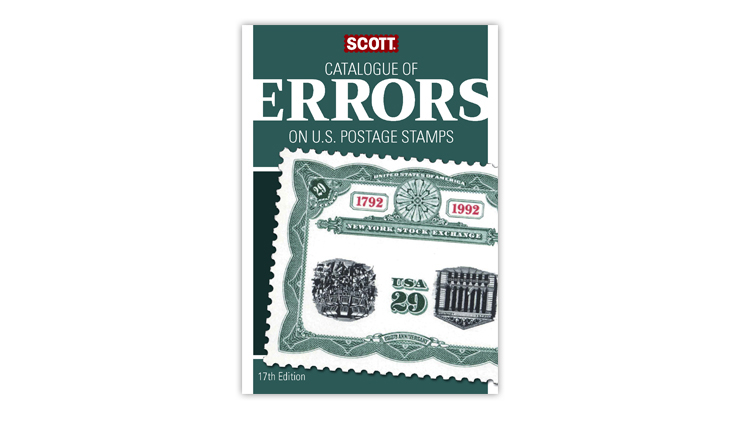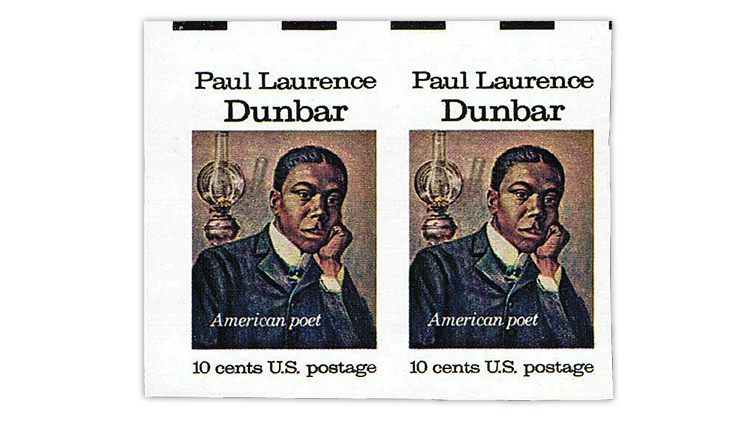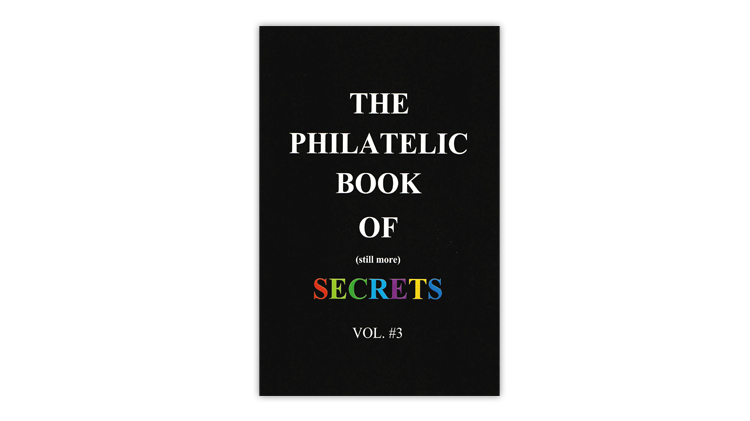US Stamps
Errors and colors covered in two new additions for an expertizer’s library
U.S. Stamp Notes by John M. Hotchner
The three-legged stool on which the expertizer depends is knowledge, tools and acute vision. But the greatest of these is knowledge, both in the form of experience and reference material.
Tools include the things we need to measure, examine fine detail and make comparisons. Acute vision allows us to see important elements of the stamp or cover being examined — things that others might miss.
But it is the knowledge of printing and finishing processes, what exists and what might exist, and what weight to give the observations from examination that bring everything into focus when it comes time to render a written opinion.
In an earlier column (Linn’s, April 28, 2014), I looked at what an expertizer’s personal library should contain. Highlights would be Fundamentals of Philately by L.N. Williams; How to Detect Damaged, Altered, and Repaired Stamps by Paul Schmid; Out-Foxing the Fakers by Jean-Francois Brun (English translation by Raymond Gaillaguet); and the Philatelic Foundation’s Opinions series (volumes I-VIII).
These are good general references, and there are many other books that can find an honored place on the expertizer’s bookshelf.
For expertizers of U.S. material, there is a significant list of books to acquire. Because there are too many to present in this column, I’ve assembled a list that I’m happy to make available to any Linn’s reader who requests it. I can send it as an email attachment, or send hard copy if the requester provides a business-sized envelope with 55¢ in postage on it. Send requests to me, John Hotchner, at jmhstamp@verizon.net, or Box 1125, Falls Church, VA 22041-0125.
Before telling you about two new books that I have just added to the list, I want to mention that an expertizer’s library should also have three other categories of material.
The first is copies of the worksheets for the material he or she has examined.
The second is a clipping file of useful material (including photographs) that has been published in the philatelic press, in auction catalogs, and in club and society journals.
The third is an index of online resources that can be helpful. Some of these can be printed out and added to your clipping file, but others are dynamic, meaning they change regularly as new information or entries are added.
What is included in these three categories will be highly specific to the areas in which an expertizer works.
My own interests are in the realm of U.S. philately after 1900 and worldwide production mistakes known as errors, freaks and oddities, or EFOs. Needless to say, my library is expansive.
The two new additions are potentially useful both for general interest and for those who have become specialists.
The first is the 17th edition of the Scott Catalogue of Errors on U.S. Postage Stamps; the 16th edition was published five years ago in 2014.
Figure 1 shows the cover of the new edition. It includes more than 50 new listings; hundreds of updated values; and many improved illustrations, all in color.
The 241-page catalog starts with seven pages of information on how to use it and definitions of the terms. It then presents imperforates, color-omitted stamps, hologram- omitted errors, back-inscription errors, and inverts.
Following all of that information is a seven-page section that lists known instances of printers’ waste that have gotten out into the collector community. Waste is error-like material that has reached collectors via the back door, often by theft of incomplete product from the printer, rather than going through the entire production process and being sold across a post office counter.
Finally, a 10-page chapter describes and illustrates representative examples of the various types of freaks, oddities and other unusual stamps.
The errors listings include a multitude of warning notes that help a collector avoid questionable material. An example is the following note for the 1975 10¢ Paul Lawrence Dunbar commemorative imperforate stamps (Scott 1554a) shown here in Figure 2: “Some pairs exist with blind perfs at top, which do not affect the desirability of the error. Of these, some pairs are known to have had the blind perfs trimmed off to create the appearance of a full imperforate pair. Such pairs tend to have a tight top margin.”
The catalog is hardcover with spiral binding that facilitates use since the pages lie flat.
To purchase the 17th edition of the Scott Catalogue of Errors on U.S. Postage Stamps, call Amos Media at 800-572-6885 or visit online at www.amosadvantage.com/product/scott-catalogue-of-errors-on-us-postage-stamps-17th-edition. The price is $39.99 for Amos Advantage members and $49.99 for nonmembers.
The second new book, recently published by Professional Stamp Experts Inc., is The Philatelic Book of (still more) Secrets, Vol. 3.
Shown in Figure 3, this 90-page, softcover work is devoted to the subject of color, beginning with a forward titled “Are RARE color varieties RARE?”
The new book is in response to readers of the previous two volumes, who commented, that while these books were helpful, they did not answer the biggest problem they had with U.S. stamps: determining whether they had a scarce color variety.
Excellent color illustrations in the new book answer that question for many of the problem stamps encountered in U.S. philately, though not for the lake and carmine lake issues I discussed in the U.S. Stamp Notes column in the May 20 Linn’s.
Still, it is the best resource I have seen for differentiating such items as the 1851 3¢ orange brown, the 24¢ issues of 1861, the 3¢ red violets of the 1919 World War I Victory issue, and a couple of dozen others.
The book can be ordered for $15 from PSE/SNPRC (Southern Nevada Philatelic Research Cente Inc.) at Box 539309, Henderson, NV 89053-9309.
I would also add that there is a national society for those readers interested in errors, freaks and oddities. The EFO Collectors Club can be an excellent source of information through its prize-winning quarterly journal, the EFO Collector, and its extensive website, www.efocc.org. Both are produced by exceptional editor and webmaster Cemil Betanov.
Membership is only $20, which entitles you to participate in club auctions as well as the totality of the website. Contact EFOCC Secretary Scott Shaulis, Box 549, Murrysville, PA 15668-0549 for more information.
Connect with Linn’s Stamp News:
Sign up for our newsletter
Like us on Facebook
Follow us on Twitter
MORE RELATED ARTICLES
Headlines
-
US Stamps
Oct 7, 2024, 3 PMMcMurtrie dismissed as APS education director following Sept. 21 arrest
-
US Stamps
Oct 7, 2024, 12 PMVasiliauskas named president of Mystic Stamp Co.
-
US Stamps
Oct 6, 2024, 5 PMApgar souvenir card available
-
US Stamps
Oct 6, 2024, 4 PMFirst Continental Congress and U.N. stamps receive Scott catalog numbers











